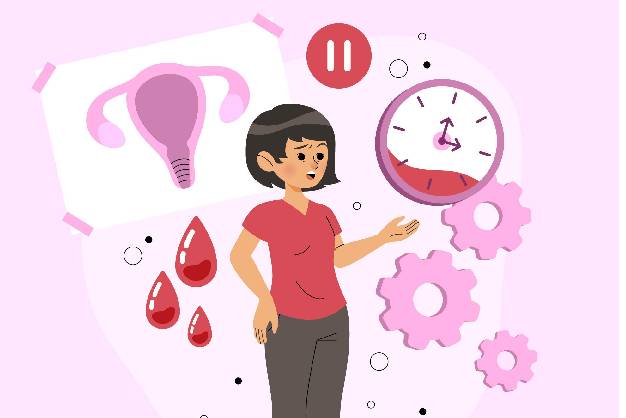Understanding Menstrual Cycle Irregularities
Menstrual cycle irregularities can be concerning for many women, affecting both physical well-being and emotional health. It’s important to understand what constitutes a regular menstrual cycle, what factors can cause irregularities, and when to seek medical advice. Here’s a comprehensive guide to help you navigate menstrual cycle irregularities. What is a Regular Menstrual Cycle? A regular menstrual cycle typically lasts between 21 to 35 days, counting from the first day of one period to the first day of the next. The menstrual flow usually lasts from 2 to 7 days, with the average being about 5 days. However, every woman’s cycle is unique, and variations in cycle length and flow are common. Common Menstrual Cycle Irregularities 1. Irregular Cycle Length: If your cycle consistently varies in length, such as being significantly shorter or longer than usual, it may indicate irregularities. 2. Missed or Skipped Periods: Missing a period occasionally can be normal due to factors like stress or hormonal changes. However, frequent missed periods or complete absence of periods (amenorrhea) for several months may signal an underlying issue. 3. Heavy or Prolonged Bleeding: Experiencing unusually heavy bleeding (menorrhagia) or prolonged periods (more than 7 days) can indicate hormonal imbalance, uterine fibroids, or other conditions. 4. Spotting Between Periods: Light spotting between periods can occur due to hormonal fluctuations, but persistent spotting may indicate issues like polyps or infections. 5. Painful Periods: While some discomfort (dysmenorrhea) is common, severe pain that interferes with daily activities may be a sign of conditions like endometriosis or pelvic inflammatory disease (PID). Causes of Menstrual Cycle Irregularities Several factors can contribute to menstrual cycle irregularities: Hormonal Imbalance: Fluctuations in estrogen and progesterone levels can affect the regularity of your cycles. Stress: Physical or emotional stress can disrupt hormonal balance, leading to irregular periods. Weight Changes: Significant weight loss or gain can affect hormone production and menstrual regularity. Medications: Certain medications, including contraceptives and antidepressants, can impact menstrual cycles. Medical Conditions: Conditions such as polycystic ovary syndrome (PCOS), thyroid disorders, and reproductive tract infections can cause irregularities. Lifestyle Factors: Poor diet, excessive exercise, and substance abuse can influence menstrual cycles. When to See a Doctor While occasional irregularities are common, persistent or severe changes in your menstrual cycle should prompt a visit to your healthcare provider. Seek medical advice if you experience: – Consistently irregular periods or cycles shorter than 21 days or longer than 35 days. – Absence of periods for three consecutive months (unless you’re pregnant). – Severe pain, heavy bleeding, or other concerning symptoms during your period. – Sudden changes in menstrual patterns after age 40. Managing Menstrual Cycle Irregularities Your doctor may recommend treatment based on the underlying cause of your irregular periods. This may include: Hormonal Therapy: Birth control pills or hormone therapy can regulate hormone levels. Lifestyle Changes: Adopting a balanced diet, managing stress, and maintaining a healthy weight can help regulate menstrual cycles. Medication: In some cases, medications may be prescribed to address specific conditions like PCOS or thyroid disorders. Surgical Intervention: Surgery may be necessary to address structural issues such as fibroids or polyps. Conclusion Understanding menstrual cycle irregularities involves recognizing what constitutes a regular cycle, identifying common irregularities, knowing potential causes, and understanding when to seek medical attention. By staying informed and proactive about your menstrual health, you can work with your healthcare provider to address any concerns and maintain overall well-being.
Understanding Menstrual Cycle Irregularities Read More »










